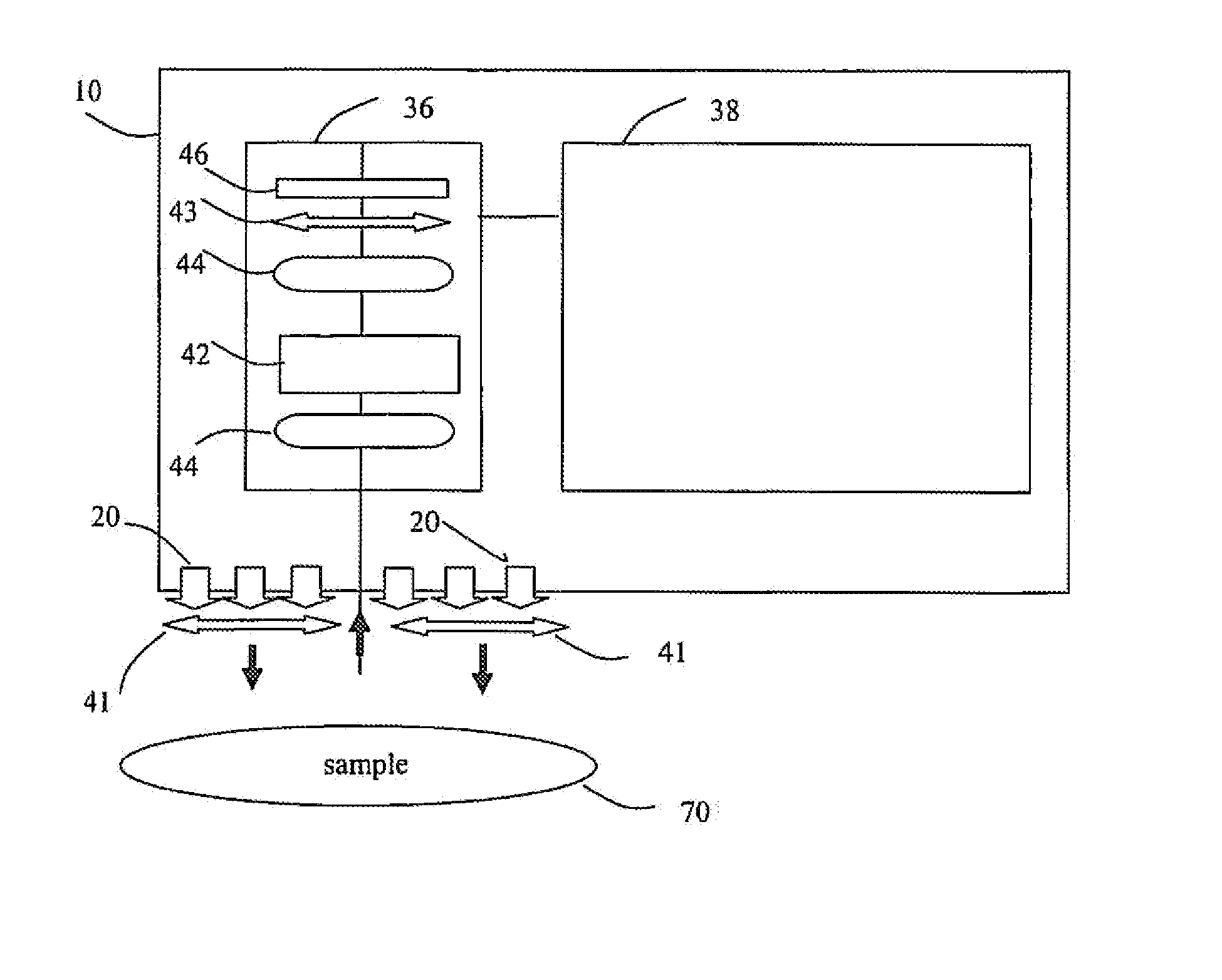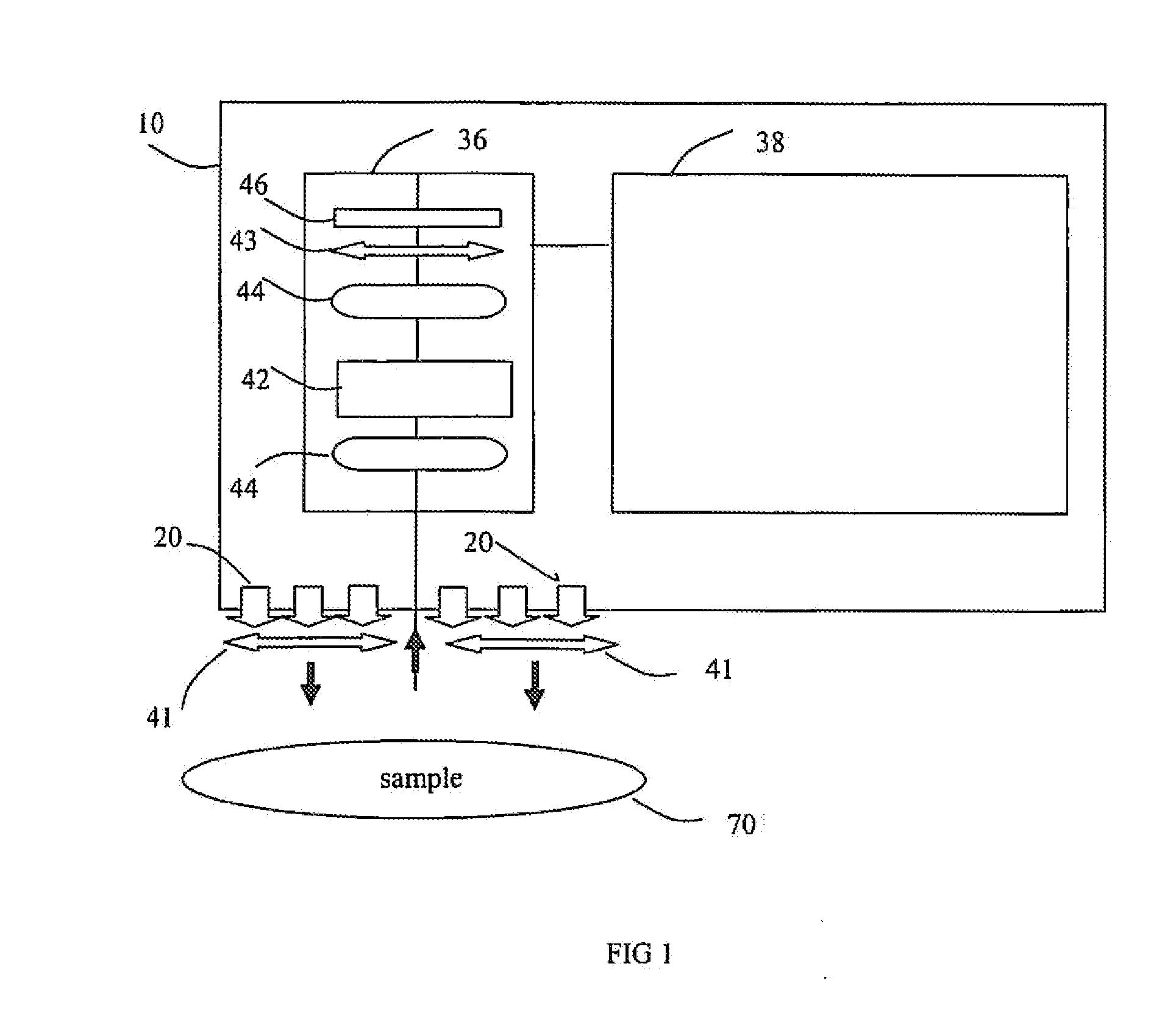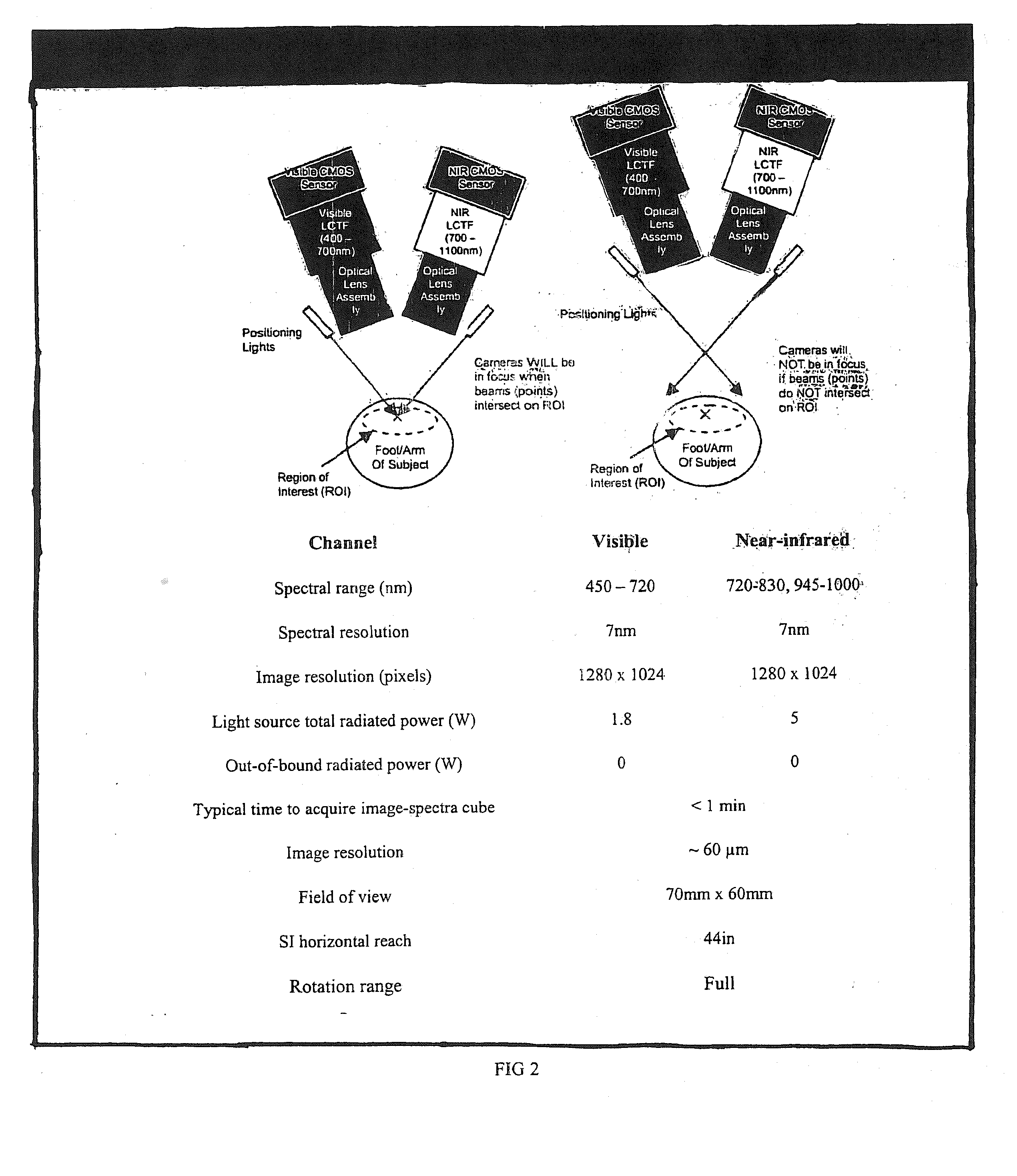Hyperspectral Imaging in Diabetes and Peripheral Vascular Disease
a hyperspectral imaging and peripheral vascular disease technology, applied in the field of medical tissues hyperspectral and multispectral imaging, can solve the problems of unsatisfactory relying on medial history and physical examination alone, poor pharmacologic treatment of pad, and about 10% of pad patients experiencing classic symptoms of intermittent clarification, etc., to reduce the resolution of hu
- Summary
- Abstract
- Description
- Claims
- Application Information
AI Technical Summary
Benefits of technology
Problems solved by technology
Method used
Image
Examples
Embodiment Construction
Background of Hyperspectral Imaging
[0037] HSI or hyperspectral imaging is a novel method of “imaging spectroscopy” that generates a “gradient map” of a region of interest based on local chemical composition. HSI has been used in satellite investigation of suspected chemical weapons production areas22, geological features23, and the condition of agricultural fields24 and has recently been applied to the investigation of physiologic and pathologic changes in living tissue in animal and human studies to provide information as to the health or disease of tissue that is otherwise unavailable.25 MHSI for medical applications (MHSI) has been shown to accurately predict viability and survival of tissue deprived of adequate perfusion, and to differentiate diseased (e.g. tumor) and isehemic tissue from normal tissue.27
[0038] Spectroscopy is used in medicine to monitor metabolic status in a variety of tissues. One of the most common spectroscopic applications is in pulse oximetry, which uti...
PUM
 Login to View More
Login to View More Abstract
Description
Claims
Application Information
 Login to View More
Login to View More - R&D
- Intellectual Property
- Life Sciences
- Materials
- Tech Scout
- Unparalleled Data Quality
- Higher Quality Content
- 60% Fewer Hallucinations
Browse by: Latest US Patents, China's latest patents, Technical Efficacy Thesaurus, Application Domain, Technology Topic, Popular Technical Reports.
© 2025 PatSnap. All rights reserved.Legal|Privacy policy|Modern Slavery Act Transparency Statement|Sitemap|About US| Contact US: help@patsnap.com



